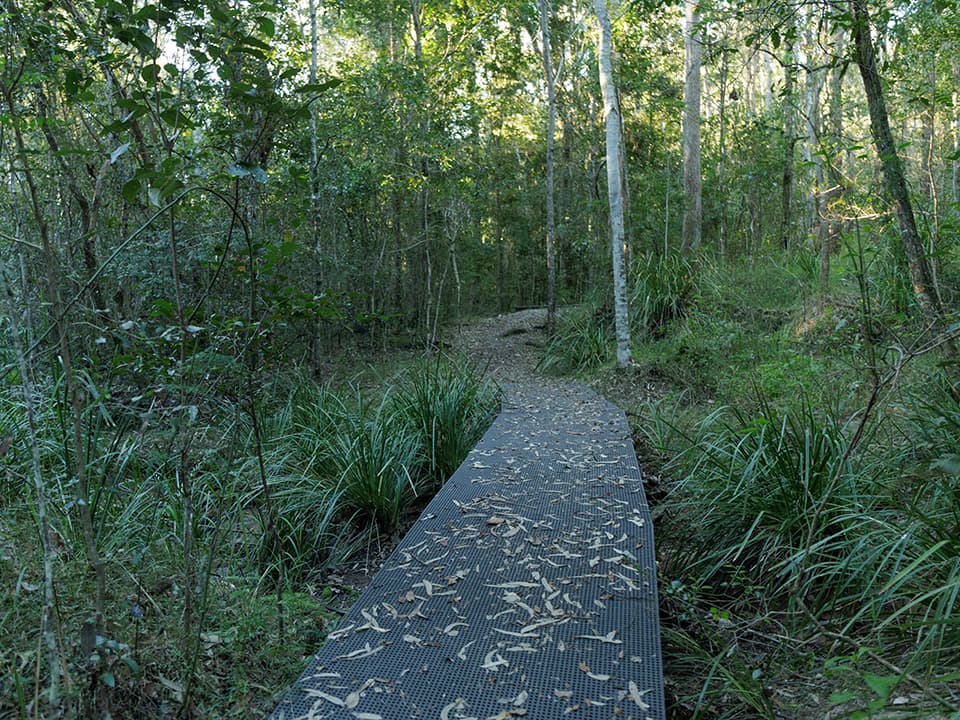What do you notice?
This creek crossing bridge and two other pedestrian bridges have been built to eliminate erosion to the banks of the gullies from the many hundreds of people who visit SERF each year. This bridge is downstream from the first creek crossing and is a continuation of the spring-fed gully, which joins with Samford Creek approximately 50 metres to your left.
At this point, you can feel an environmental change. The tree canopy is dense with lower light levels penetrating the forest floor. There is a rich earthy smell with an increase in humidity. This is the transition point between the Dry Sclerophyll Forest or Open Woodland you have just passed through into a Gallery Rainforest or Notophyll Vine Forest and also known as a Riparian zone, which has not been disturbed since European settlement.
Why are riparian zones important?
Samford Creek and other riparian zones provide a rich and diverse habitat for a myriad of birds, mammals, invertebrates, reptiles and amphibians and are the interface between land and water habitats.
These zones act as continual corridors for the movement of wildlife from fences constructed for urbanisation and farming practices. They act to mitigate flood damage downstream by reducing the force, height, speed and volume of flood waters. They reduce the fluctuations of water temperatures from the sun's radiation by the overhanging branches of the dense canopy ensuring aquatic life to flourish. The dense root systems of the vegetation greatly reduces the damage from erosion.
Riparian vegetation, such as the strappy long green grasses along the bank of the gully (Lomandra hystrix), absorbs and filters nutrients, sediments, fertilizers and pesticides from runoff into surface waters. Without these important forest communities, habitats and species would be lost.
